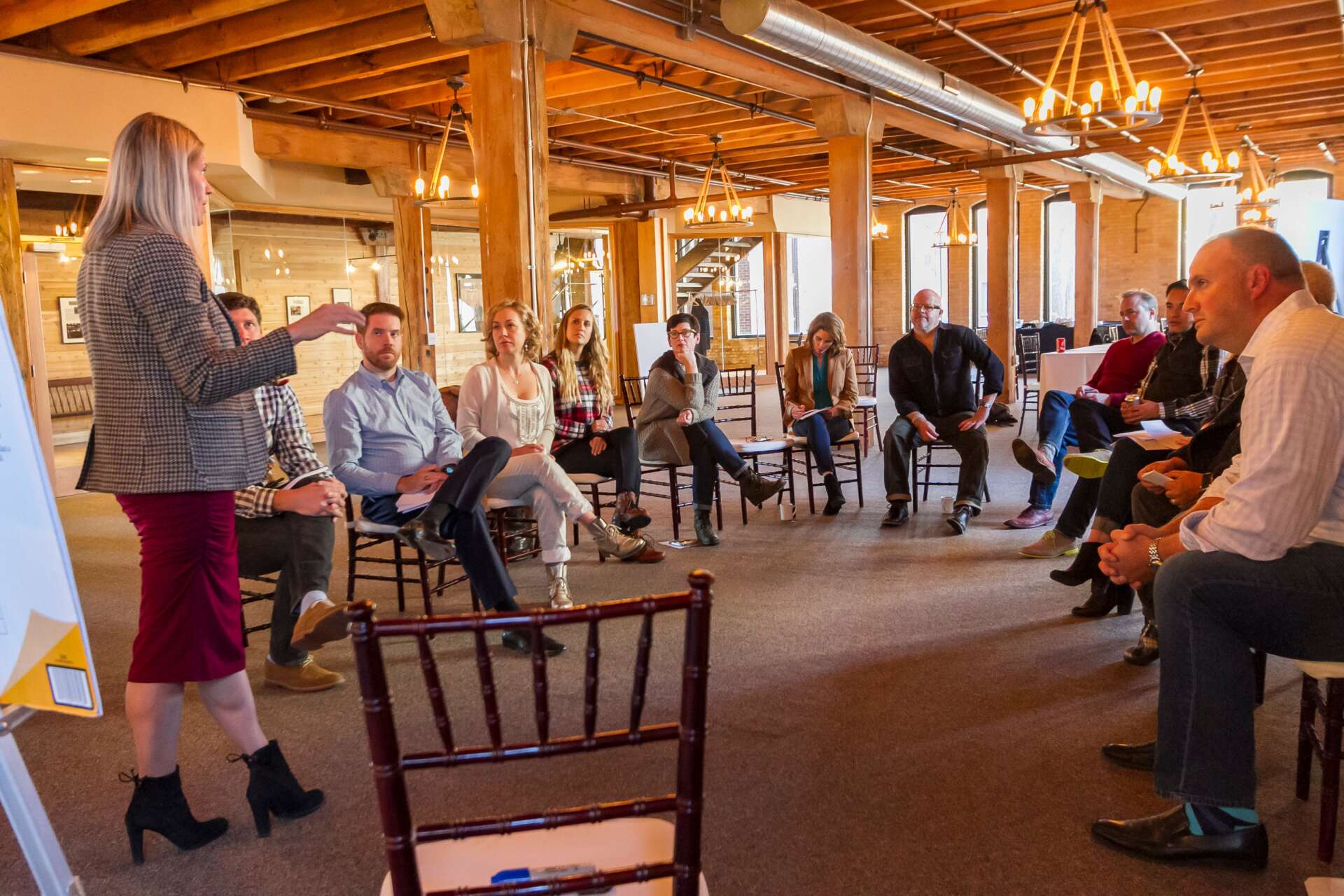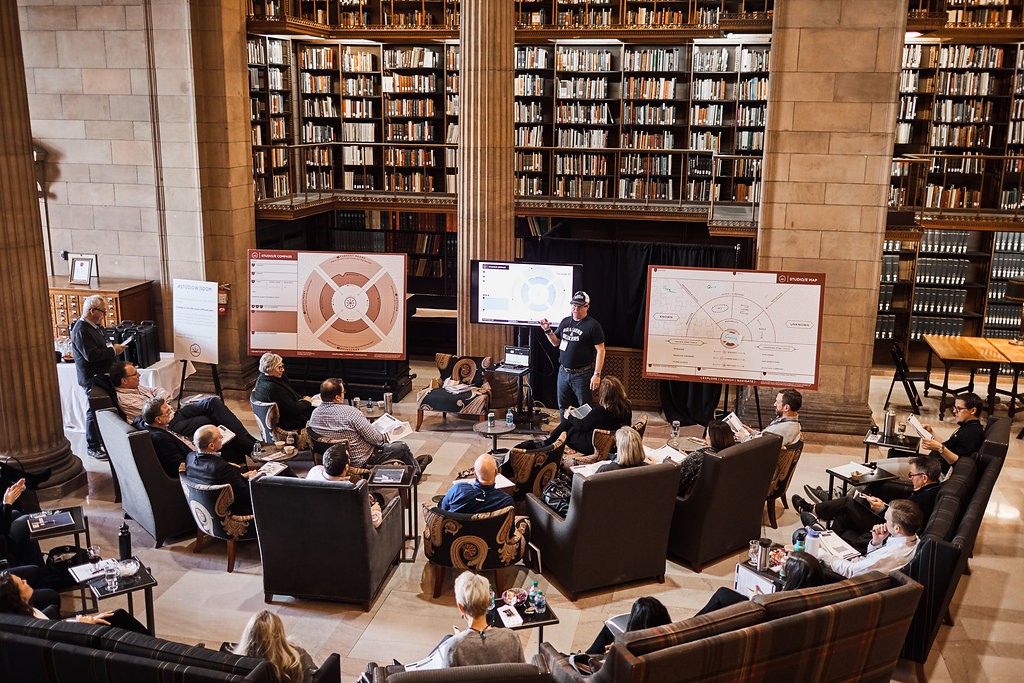We were lucky to catch up with Tom Wiese recently and have shared our conversation below.
Alright, Tom thanks for taking the time to share your stories and insights with us today. Who is your hero and why? What lessons have you learned from them and how have they influenced your journey?
Ironically, I have never met one of my most influential heroes. His name was Ernest Shackleton, an Anglo-Irish Explorer during Heroic Age of Antarctic exploration (1897–1922). Studying his expeditions has made me a better leader and inspired me and a great friend of mine to launch a business called Studio/E. Studio/E helps Leaders with exploring the unknown by equipping them with proven exploratory practices and a supportive network to confidently navigate change, launch new ideas and create a more prosperous future.
One of Shackleton’s expeditions has become legendary. It was called the Imperial Trans-Antarctic Expedition of 1914. The Expedition’s primary goal was to be the first humans to trek across Antarctica from sea to sea via the south pole for scientific discovery of this unexplored land to bring honor and glory to Britain.
Soon after the expedition started, it was in deep trouble. Hundreds of miles from the shores of Antarctica, the expedition ran into thick sea ice while trying to make its initial landing. For weeks the crew navigated around these ice flows until they were eventually surrounded by thickening ice. Ultimately, the expedition’s ship, the Endurance, was stuck, frozen in a massive block of ice fifty miles from the Antarctic shore.
Over the next ten months, the expanding ice began to crush and ultimately sink the Endurance. The crew floated hundreds of miles away from the continent on a block of ice out toward the violent South Sea. Shackleton was responsible for the lives of his crew of twenty-seven. Death seemed imminent. There was no instruction book for this expedition into the unknown. For the next 634 days (about twenty months), Shackleton and his crew faced unknown crises again and again.
I revere Shackleton as the archetype of a successful exploratory leader. He repeatedly navigated through a series of disasters that by all accounts should have brought certain death. If this story had not been so well-documented by the diaries of the crew and a photographer, it would be easy to believe this epic tale was pure Hollywood fiction, fabricated for a summer blockbuster.
Shackleton led his talented crew to successfully overcame these life-and-death events by using principles of Exploratory Leadership.
I will briefly highlight a few of the insightful and effective principles Shackleton used to explore, launch, and navigate unknown after unknown.
Principle 1. Explored in alignment with his purpose. Shackleton stayed connected and aligned with his purpose (to bring honor and glory to Britain while keeping his crew alive) despite having abandoned the primary goal of crossing Antarctica. Shackleton’s ability to focus on his energizing purpose created the drive and stamina that enabled the entire crew to endure. Shackleton did not confuse his purpose with his goal, which was very uncommon for explorers at that time, and in fact, still is. Like Shackleton, great exploratory leaders fall in love with their purpose, not their ideas or goals. I learned that Purpose creates energy and resilience to overcome massive obstacles.
Principle 2. Launched with a curious explorer’s mindset. Shackleton’s response to his granddaughter when she asked him about the most important qualities of an explorer was: “First optimism, secondly patience, third imagination, and fourthly, courage.” Mindset generates the stories we tell ourselves about the events we are experiencing. This is the most-powerful tool any of us have when navigating the unknown is to tell ourselves generative stories versus stories of despair. When their ship sank, Shackleton famously told his crew it was time to go home as they stood on a block of melting ice floating out to the south sea, and that was their “story” for the rest of the expedition. The energy of Shackleton’s optimism, the grace he created with his patience, his inspiration, and his courage all enabled him to quash anxiety, motivate his crew, and get them all home alive. I learned that the Mindset you embrace creates the stories you tell yourself which in turn drives you to the outcome you desire.
Principle 3. Navigated with packaged idea MVPs (Minimum Viable Progress- small steps). When disaster struck the expedition, Shackleton broke down the massive challenge to get home into small steps, because big steps required dangerous assumptions and where overwhelming. Shackleton and his men regularly measured the food stores, equipment, weather patterns, their progress, their coordinates, and many other things, so they always knew where they stood. This clarity produced a sense of safety and allowed them to constantly explore new ways to survive, take small actions, and navigate on what they learned through challenges until they found their way home. I learned that MVPs (small steps) create clarity when you are in the unknown so that you keep moving forward.
These Principles (i.e., Purpose, Mindset and MVP) have afforded me to create the life I want and allowed me to help others do the same. They can be used individually or collectively. We have discovered over the last decade (working with 1000s of leaders) these Principles help guide you to create the future you desire.



Awesome – so before we get into the rest of our questions, can you briefly introduce yourself to our readers.
My purpose is to live a truthful life and help others do the same. That purpose shows up in many ways and has allowed by to do many different things. I share the great expedition of life with my wife (for the past three decades) and four children. I am also a practicing entertainment lawyer, negotiator, teacher, facilitator, entrepreneur, author, tool designer, skier and guide. All these labels are driven by my purpose.


Can you tell us about a time you’ve had to pivot?
I have started many businesses and been involved with launch of hundreds of ideas. It would be hard for me to come up with an example of when I did not pivot in all those endeavors. When launching new things, you are constantly pivoting on feedback from users, the market and your team.
I will share one example, in 2011 we developed an in-person immersive all-day experience teaching Exploratory Leadership principles that took place quarterly, over the course of a year. It was a spectacular and transformative experience that over a thousand influential leaders went through. As the years went by the ability for influential leaders to spend a whole doing anything became difficult and not lifestyle friendly. Yet they needed this type of experience more than ever given the day-to-day crisis and rapidly changing world they were facing.
We decided to pivot with that all day experience and create a one-hour virtual experience that would take place over the lunch hour once a month, for a year. This pivot has allowed us to work with more people that are all over the country and provided a dose of monthly inspiration to many leaders that are facing crisis after crisis. It was a successful pivot that we first we initially thought would be impossible.
I have also had the experience of pivoting to the wrong place, with the wrong people and at the wrong time with very bad results. You must be careful to the who, why and the what (data) you are looking at when designing and making a pivot.


Can you talk to us about how your side-hustle turned into something more.
So, a lawyer and a lobbyist decided to get together to create a leadership development firm that would help leaders create the future they desire versus reacting to what was happening. This sounds like the beginning of a bad bar joke. Yet it is our story. Nate Garvis and I started Studio/E to be a master mind group for fifteen of our friends that were all having a hard time navigating the changing land scape of a rapidly changing world. Through this process we developed a method to successfully explore new possibility, launch new ideas and navigate change.
What started as a side hustle for 15 of our friends has turned into a primary business that 1000’s of leader have attended and embraced. We started to focus on this business about 2 years after talking about it on a walk in the mountains. We are coming out with a book called Explore or Expire in the fall of 2023 that archives the principles of this Exploratory Leadership adventure.
The milestone are simple (but a lot of work) for this side hustle:
We had an idea of launching a leadership development mastermind group for our friends.
We launched a beta day.
We created a framework and a brand essence.
We talked to participants constantly.
We enrolled some super fans.
We made pivots on the program after every session we had.
We asked others to join the journey and it launched as a full-time business 2 years after it launched.
It has been an interesting and fulfilling experience. It has become a lifelong quest!



Contact Info:
- Website: https://www.yourstudioe.com
- Instagram: https://www.instagram.com/yourstudioe/
- Facebook: https://www.facebook.com/YourStudioE
- Linkedin: https://www.linkedin.com/company/studio-e-llc/
- Twitter: https://www.twitter.com/yourstudioe


